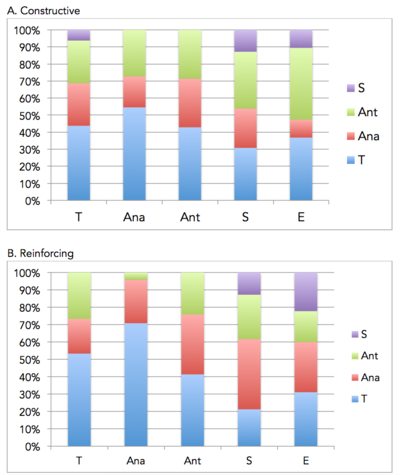PS2 - 01: USING TAASE TO CHARACTERIZE CONSTRUCTIVE AND REINFORCING OPERATIVE FEEDBACK FROM FACULTY: THEREâS ALWAYS ROOM FOR IMPROVEMENT
Emily S Huang, MD, MAEd1, Nina W Zhao, MD2, Hueylan Chern, MD2, Patricia S O'Sullivan, EdD2; 1University of Chicago, 2University of California San Francisco
Background: Providing effective feedback, aligned with achievable learning goals, is an essential skill for surgical faculty. To address this need, we developed an evidence-based descriptive feedback tool, TAASE (Technician, Anatomist, Anticipator, Strategist, Executive), that describes progression along an operative developmental trajectory. However, little is known about how faculty use TAASE and whether they provide feedback appropriate to the learner’s level. Using the TAASE framework, we analyzed the specificity and level-appropriateness of constructive and reinforcing operative feedback provided by general surgery attendings to residents.
Methods: We reviewed general surgery resident case-based operative assessments, in which evaluators select the resident’s predominant stage of operative development along the TAASE trajectory and provide constructive and reinforcing feedback comments. After removing gender, level, and procedure identifiers; we coded comments for type of feedback (general, specific, reinforcing, constructive), and classified each comment by TAASE stage. For each assessment, we recorded the frequency of the classified comments. We summarized across all assessments the comments by the evaluator-assigned TAASE rating.
Results: 93 assessments, completed by 34 individual attendings on 33 individual residents between October 2015 and January 2017, included 131 constructive and 221 reinforcing comments. 117 (89%) constructive comments and 160 (72%) reinforcing comments were specific; the remainder were general or described personal attributes, such as attitude, that can mediate development. Attendings provided a substantive proportion of Technician-oriented feedback to residents at all levels; 39% of all specific comments were technical. With advancing TAASE stages, attendings increased the proportion of higher-level constructive and reinforcing feedback (see figure).
Conclusions: When prompted for operative feedback, faculty evaluators provide specific constructive and reinforcing comments. As residents develop, attending feedback aligns with progression along the TAASE trajectory, but continues to focus strongly on technical aspects of performance. These findings reflect the fluid process of learning to practice surgery, in which trainees continue to hone multiple skills simultaneously; however, encouraging faculty evaluators to focus on learners’ current and adjacent TAASE stages may make feedback more effective.
Figure: TAASE-oriented specific feedback comments given to residents at each developmental stage, as a percentage of total specific comments for (A) constructive and (B) reinforcing feedback.

